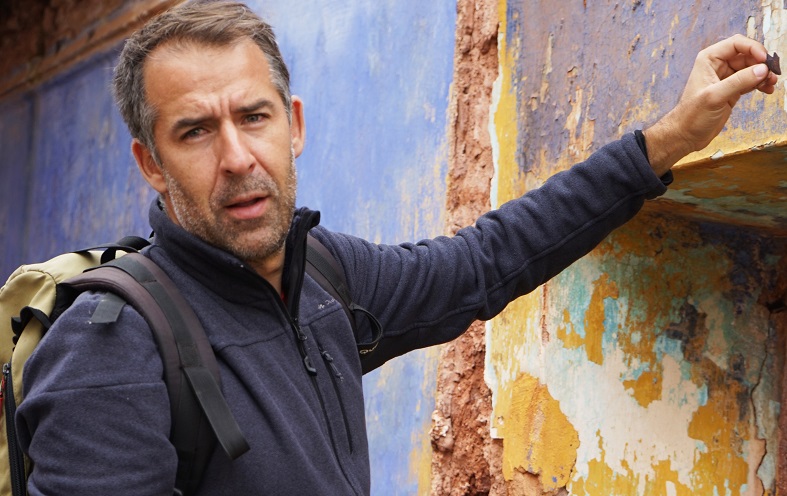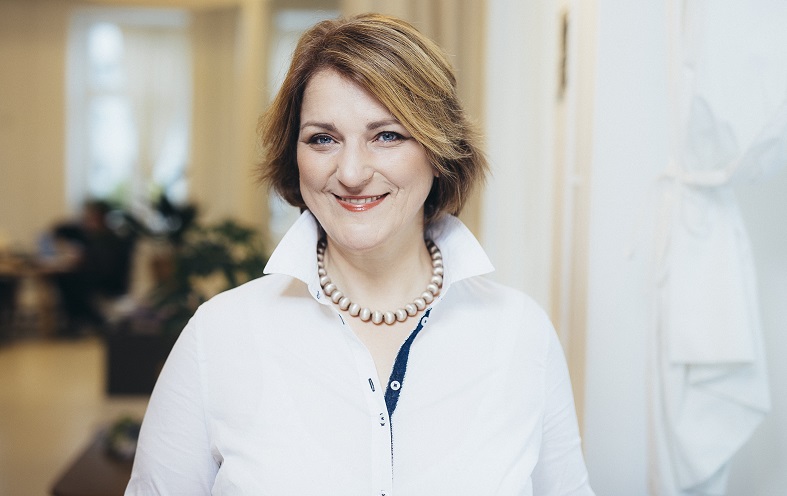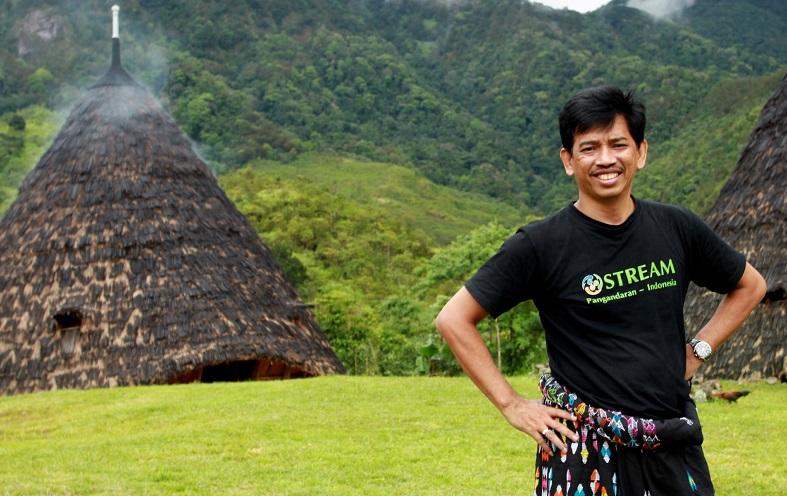
How to bring footfall to under-explored regions of Jordan and, at the same time, support the economic and social potential of a local community? BARAKA, the consulting company founded by Muna Haddad, works towards community empowerment and economic self-reliance by building and nurturing local businesses in Jordan and other regions.
In this episode of our series of interviews with leading sustainability champions and tourism changemakers, find out how Muna works towards empowering locals through community-based tourism businesses. With continuous support and professional training, she aims to transform such local enterprises to be viewed as a business with a revenue stream, rather than a charity that relies on funding.
We hope you enjoy this portrait of a very inspiring, entrepreneurial woman who approaches tourism the way it should be: as a tool for helping individuals and communities prosper.
Muna, having worked with the tourism industry for more than a decade; when did you first discover your passion for sustainable tourism?
I stumbled upon the travel industry after university. My first job was working in marketing at the Jordan Tourism Board. I remember the moment I fell in love with the travel sector so clearly. I was hosting a group of journalists, standing in front of them representing my country, culture, and history.
I got to see the power of the tourism sector in shattering misconceptions, opening people’s hearts and minds to the world and its people, and fighting bigotry. Travel makes us better people. I wanted to be a part of that for the rest of my life. I got to know my country and its people at a much deeper level and fell in love with that too.
Then, three years in, I quit my job in search of a way to use tourism as a force for good, and to make sure local communities have a fair shot at benefiting from tourism financially, but also by using it as a platform for their stories.
What are your thoughts on the current state of ecotourism in Jordan?
I think the growth of adventure tourism and ecotourism in Jordan has attracted the right kind of clientele for the tourism sector. Those are travellers keen to dig a little deeper and get to know the people of Jordan better. They are the best ambassadors for the country, they fight to protect its ecosystem in the global community and represent its people everywhere they go. It’s a beautiful thing.
At the same time, it is a worrying state: as Jordan has become a more popular destination, places like the desert of Wadi Rum are being threatened. As demand grows, site management becomes critical.
There is still a long way to go in terms of government commitment to nature conservation and reaching a balance between tourism and conservation. I also believe there is room for improving policies to become more inclusive of local communities engaging formally in the tourism sector.
Value, not volume is a topic we discuss often, I am keen on that – however without making travel exclusive.
Olive oil harvesting in Umm Qais is one of the many community-based tourism initiatives by your organization, Baraka Destinations. How can a seasonal business like this one generate revenue during lean periods, and also during off-peak travel seasons?
Seasonal activities are much more than bringing in guests and revenue during off-peak season. In the type of rural slow tourism we are creating, we observe the land in all its seasons, our menus change based on what is being cultivated from the land around us.
This news article offers a glowing review of the success of community-based tourism in Umm Qais – and you are currently working towards replicating this success story in Pella. Are there any other such projects in the pipeline?
Yes! We are now preparing to announce the third destination to start working in. We have worked hard in partnership with the people of Umm Qais and have been able to make a real difference in the tourism sector in the area.
What I am most proud of is the linkages we have created within the community in localizing the supply chain, this way ensuring that more than 73% of tourism income remains in the village, compared to the global average 19%.
We are also looking at eventually replicating the model in other countries and influencing donor funding to support the impact-driven business.
It is time for community-based tourism to be viewed as a solid business rather than a charity, and I feel we were able to prove that through our work with Umm Qais. This is not just about money, but being able to put the local community at the center of the story of the place, which is a key to success in terms of ownership, resilience, and stamina.
In your experience, what is the average incubation period for a community-owned tourism business to turn profitable?
Three to five years.
There are a lot of variables relating to the budget available for marketing and sales, as well as capacity building and training.
One of the most valuable lessons learned for us was that we needed to regularly have a training budget, not just at the setup phase. As more tourists come, the businesses and entrepreneurs need to evolve.
Another important attribute to our model is reliability and longevity. We are there to stay, we are not a three-year project. So the nature of our relationship with our partners is different and has a long-term vision, which is clear to all involved. Our vision is aligned, we all want to put their village on the tourism map, to tell their stories and share their experiences.
What are some important tips that you can share with other entrepreneurs in the responsible travel industry?
Over the years, meeting various people in the sector, I feel there is a fear of working with the locals. Understandably so, there are a lot of examples of where relationship have gone sour.
My attitude about it comes from perhaps the most valuable lesson I learned from a Bedouin Sheikh from Wadi Feynan. I met him a decade ago as I was just starting my work in community-based tourism. I was trying to be as invisible as possible and fitting into his world by dressing, speaking and acting in the way I thought would mimic his world. I walked into Abu Khalil’s goat-hair tent and introduced myself briefly putting on a very heavy Bedouin accent, which clearly didn’t belong to me. He saw right through me, and with a very kind look in his eyes, put his hand on my shoulder and said to me, “dear, there is no need for you to pretend to be something you are not. In this world, there is room for you and room for me.”
Since that day, I am completely myself, honest and transparent with anyone I meet. Because, there is room for them, and room for me.
That should be the foundation of any relationship we have with the people we work with. Wherever they are from, whatever life experience they have had.
What were the criteria for choosing the 12 social enterprises which are now part of Jordan Tourism’s Meaningful Travel Map of Jordan? How did Baraka Destinations become part of the Meaningful Travel Map of Jordan?
We created a meaningful travel map for the Jordan Tourism Board and for Tourism Cares. It was created as a tool for tour operators and has managed to attract more than 10k tourists to these places so far.
The purpose of it was to challenge the charity mentality and to support local communities by bringing business to them. The traffic has pulled some organizations out of debt, increased employment opportunities for others, and certainly got the stories out of the unsung corners of the country.
The selection of the current enterprises on the map was meant to take into account the impact, be it social or environmental. We looked at the owners, who are benefiting from the business, a variety of experiences and geographic representation.
Of course, it was also important to look at market readiness and worth noting that we insisted to have enterprises that were not exactly at that level and have tour operators invest in their upgrade.
For example, Iraq Al-Amir Women’s Co-operative has a superb experience that supports the women in that village, and The Travel Corporation stepped in to support upgrading the gift shop so that the groups that have committed to visiting would spend more on-site and benefit these ladies by buying their souvenirs from there.
Amman, Dead Sea, Petra, and Wadi Rum are famous among international visitors and happen to be the most visited places in Jordan. Do you think ecotourism experiences in places like Dana Biosphere Reserve, Azraq Wetland Reserve or Shaumari Wildlife Reserve will experience a similar demand from tourists?
The nature of these sites can accommodate the masses (luckily), but at the same time, the ecology is a lot more delicate. I think Dana has certainly seen incredible growth over the last decade in tourism arrivals and the Royal Society for the Conservation of Nature and the local community have really had to work on finding a balance. As protected areas, they are held accountable at higher standards for visitor management.
To your mind, are there enough efforts by the government in handling overtourism issues in places like Amman, Dead Sea, Petra, and Wadi Rum?
I think the government is very conscious of overtourism on a national as well as a local level. Petra, being the most critical due to its UNESCO listing, has been taking active steps in visitor management. A lot of us who are keen on the ecosystem preservation of Wadi Rum are concerned about the lack of control of campsites being set up.
It is the right of the locals of Wadi Rum to benefit from their natural asset, however strict regulations need to be in place and be implemented with a strong arm to ensure no further sprawl at the expense of the delicate ecosystem. A lot of the camps are owned but not run by locals. I urge consumers to make informed decisions and pressure the businesses they choose to visit to always hire locally and adhere to conservation laws.
Let one thing be clear though, there is no overtourism in Amman. It is my city, and most tourists pass through only scratching the surface. There is so much depth in the city that very few tourists have explored.
Although a few streets may be considered touristic areas, there is a wealth of history and culture to the city that is rare and unique around the world. Most tourists don’t get to see that part.
In your view, what is the best way to measure the success of sustainability initiatives in travel and tourism?
In our work we did benchmark assessments, then quarterly reports, then bi-yearly assessments. We were looking at a number of people benefiting from the tourism sector through our work both directly and indirectly.
We were also assessing income levels and using local average as a benchmark, we look at age groups and gender of people working with us, and finally, we looked at milestones in their growth. For example, they left a government job and started working full time, or they put their kid through college, etc.
All said, the hardest thing to measure, which is the one thing that makes our method stand out, is the pride and dignity that our partners have in their work. If anyone figures out how we can translate that into metrics, please let us know!
Clearly, greenwashing is such a fad and now with the excitement over the SDGs I expect to be seeing a lot more of it. I think we stress the measurement of the final result, rather than the process in smaller milestones in a way that pressures complex big businesses to falsify data to ride the wave. The reality is that being a sustainable business is complex, hard, and takes time.
For example, a large scale hotel going green means they first have to go through their existing stock of plastic shampoo dispensers, rather than throwing them out. It is a better decision for nature conservation if we are stating facts. But as consumers or industry specialists, we look judgmentally at the plastic dispenser, not realizing the complexity of such changes.
Taking that into account, I think we need to focus more on the content of how we go through this journey to become more sustainable as a sector, rather than fixating on the final destination. It’s important to have goals, but we have to spend more time mapping out the path to get there.
Thank you, Muna!
Get in touch with Muna Hadda on LinkedIn and find out more about her sustainable tourism consulting company BARAKA on their website.
Enjoyed our interview with Muna Haddad of BARAKA on how community-based tourism in remote areas of Jordan is helping locals earn a steady income? Thanks for sharing!
buy celexa online
buy Lasix
Soma No Prescription
buy Vardenafil online




